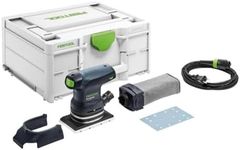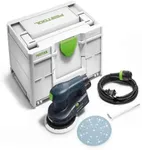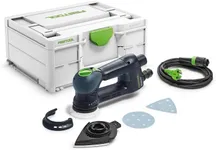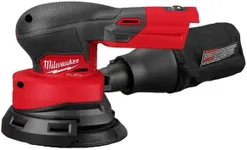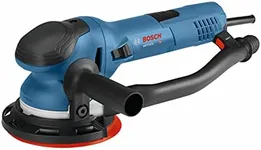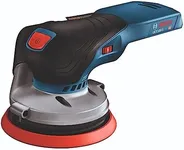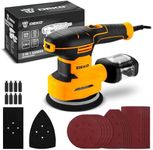Buying Guide for the Best Orbital Sanders
Choosing the right orbital sander can make your woodworking or DIY projects much easier and give you better results. Orbital sanders are versatile tools used for smoothing surfaces, removing paint, or preparing wood for finishing. To find the best fit for your needs, it's important to understand the key features and how they relate to the type of work you plan to do. By focusing on the main specifications, you can select a sander that matches your projects and comfort level.Power (Amperage or Wattage)Power in orbital sanders is usually measured in amps (for corded models) or volts (for cordless ones). This spec tells you how strong the motor is and how well the sander can handle tough jobs. Lower power (around 2-3 amps) is suitable for light sanding and finishing work, while higher power (4 amps and above) is better for removing material quickly or working on larger surfaces. If you mostly do small, detailed projects, a lower-powered sander will be easier to control. For heavy-duty or frequent use, a more powerful sander will save you time and effort.
Sanding Pad SizeThe sanding pad size, often given in inches (like 5-inch or 6-inch), determines how much area you can cover at once. Smaller pads are great for getting into tight spaces and for detailed work, while larger pads are better for sanding big, flat surfaces quickly. If you work on furniture or small crafts, a smaller pad is more maneuverable. For doors, tables, or large panels, a bigger pad will help you finish faster.
Orbit Speed (OPM - Orbits Per Minute)Orbit speed tells you how fast the sanding pad moves in tiny circles. Higher OPM means faster material removal, but it can also make the sander harder to control on delicate surfaces. Some sanders have variable speed controls, letting you adjust the OPM for different tasks. For most users, a variable speed sander is more versatile, allowing you to go slow for fine finishing or fast for rough sanding. If you only do one type of job, a fixed speed might be enough.
Dust CollectionDust collection refers to how well the sander captures the dust it creates. Good dust collection keeps your workspace cleaner and protects your lungs. Some sanders have built-in dust bags or can connect to a vacuum. If you work indoors or care about air quality, look for a model with effective dust collection. For occasional outdoor use, this may be less important, but it's still a nice feature to have.
Ergonomics and WeightErgonomics is about how comfortable the sander is to hold and use, especially for long periods. Lighter sanders are easier to handle and cause less fatigue, but heavier ones can sometimes help with stability on large surfaces. Look for a sander with a comfortable grip and balanced weight. If you have smaller hands or expect to use the tool for long sessions, prioritize comfort and lighter weight.
Type of Motion (Random Orbit vs. Regular Orbit)Some orbital sanders move in a simple circular motion, while random orbit sanders combine circular and elliptical movements. Random orbit sanders are less likely to leave swirl marks and are better for finishing work. Regular orbit sanders are fine for basic sanding but may not give as smooth a finish. If you want a versatile tool for both rough and fine sanding, a random orbit sander is usually the better choice.
